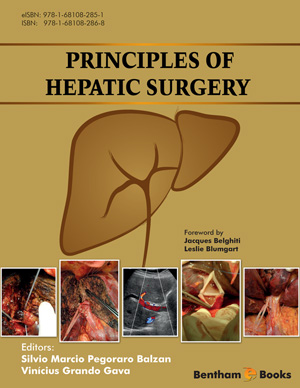Abstract
• Knowledge of hepatic segmentation is crucial for safe liver resection. Remnant liver parenchyma should have adequate vascular inflow, vascular outflow, and biliary drainage.
• Different methods of vascular control are available and useful to reduce bleeding during hepatectomy. Inflow occlusion is the easiest and best tolerated option. Total vascular exclusion of the liver is required in some cases of tumors close to the debouchment of the hepatic veins and inferior vena cava.
• The two main approaches to selective inflow hepatic control are intrafascial and extrafascial (or Glissonean). The first is required for tumors close to the hepatic hilum.
• Anterior approach, mainly using the hanging maneuver, seems to reduce blood loss, facilitates “no touch” resection, and reduces the risk of liver damage for mechanical compression of the remnant liver during surgery.






















